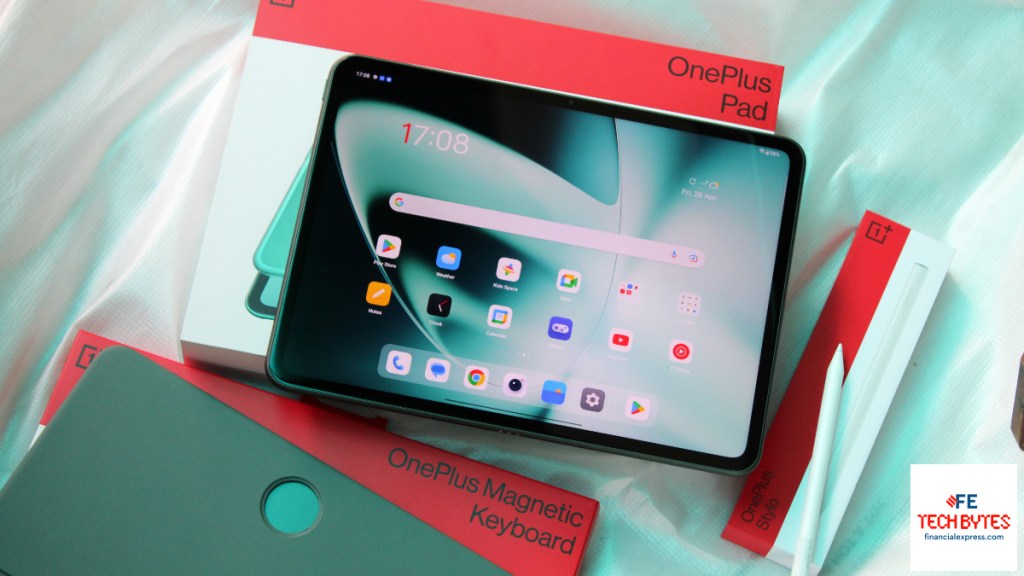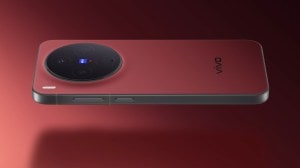Clean slate with unbound potential is how I would describe the OnePlus Pad. Come to think of it, that’s impressive, what with it being OnePlus’s first tablet and all. Everything from the design, to the specs, to pricing, is on point. To such an extent, it makes one wonder, have Samsung and Apple been taking us for a ride, all this time? Well, yes and no.
But as impressive as the OnePlus Pad is, it is no home run. Far from it. The technicalities can wait. Because OnePlus has been able to put up quite a show, and for that it deserves a lot of credit. The OnePlus Pad, in fact, reminds me of the OnePlus of yore in that it makes premium hardware available at a bargain price. It may not be a pro in name, but it is surely one in game.
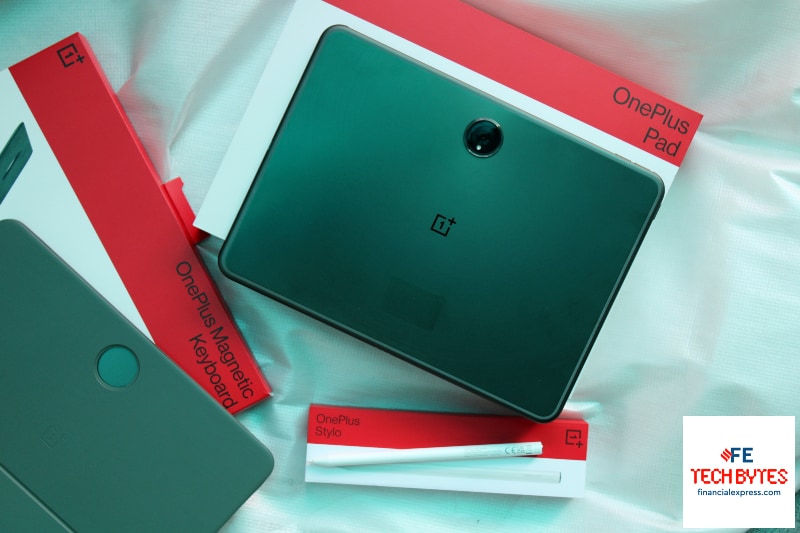
There have been comparisons with the iPad but I feel those are unfounded and unfair. The OnePlus Pad doesn’t look anything like it. It’s got a mind and body of its own. Its own character. And it looks very nice. The whole tablet seems to have been milled out of a single block of smooth, sturdy metal. You can get it in green only and while more colours would have been greatly appreciated, at least, the tablet you buy won’t get lost in a sea of silver and black sameness.
Also Read | OnePlus Nord CE 3 Lite 5G review: A no-brainer at Rs 20,000
The OnePlus Pad is quite sleek and easy to lug around for a tablet that’s a hairline short of being 12-inches. It measures 6.51mm. It weighs quite a bit— on paper— at about 552g but it’s balanced out well, so it doesn’t feel overpowering regardless of the orientation you prefer. Very few tablets get this right, so it’s a big deal. The sides and corners are rounded ever so slightly and help enhance in-hand feel further.
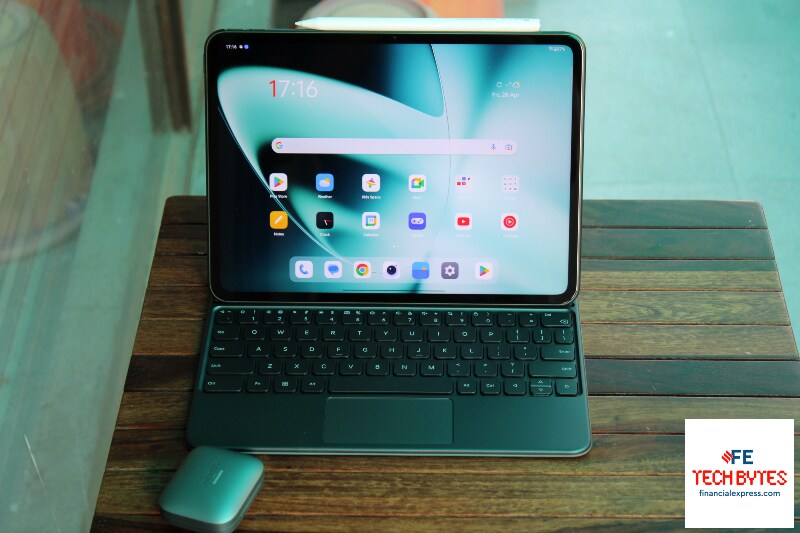
But it’s OnePlus’s choice of aspect ratio for the tablet’s display that’s the real selling point, I feel. The OnePlus Pad features a not-so-common 7:5 aspect ratio which makes portrait use as convenient –and enjoyable— as landscape. The screen wins as a portable home theatre and as a productivity powerhouse giving you the best of both worlds in one package. The quality of the screen, too, is top-notch. It’s an LCD but it’s high-quality— it’s rich and pixel dense (2.8K, 296ppi) and can refresh at up to 144 times a second making day-to-day interactions fast and fluid. It could have been a bit brighter but the 500nits cap should get the job done except maybe in some fringe cases. There is support for Dolby Vision playback if you’re into that sort of thing.
The only gripe with this display is that the bezels are too tight. It might make a lot of sense on a smartphone, but on a tablet it’s actually the other way round. It looks good, sure, but it is also a breeding ground for accidental touches. It’s surprising OnePlus chose to go this way because everything else about the OnePlus Pad is so well-calculated, it makes this one small quirk stand out and literally wave a big red flag at you.
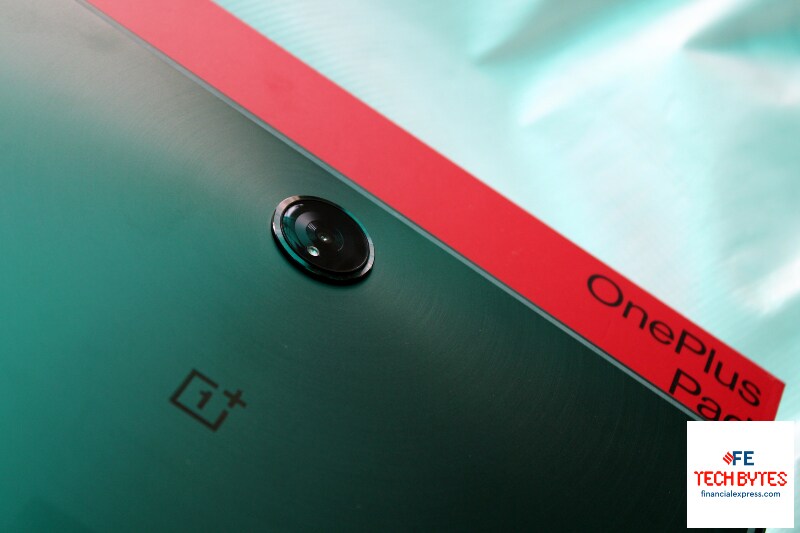
Take the chipset for instance. Instead of Qualcomm’s flagship chip, the OnePlus Pad comes rocking a MediaTek Dimensity 9000. It’s no slouch but it would definitely make you sit up and notice— and question, why? Keeping the cost aside, the move makes sense. The devil is in the detail. OnePlus— it is widely known by now— does not allow high-refresh rate gaming in many of its phones, high-end included. That’s the case with the OnePlus Pad too, mostly. The tablet makes very little use of its fantastic screen credentials hovering mostly around 60-90Hz in regular use, hitting 120Hz on occasions. All things said and done; a more powerful chip say from Qualcomm will be an overkill for this tablet (more on this a little later). Not to mention, it would have – presumably— added to cost.
For everything else, the Dimensity 9000 is well cut-out. The tablet scored a respectable 8,56,350 on AnTuTu. The performance on the whole is nice and nippy with no visible signs of thermal throttling. You can get the OnePlus Pad with either 8GB/12GB of LPDDR5 RAM and 128GB/256GB of UFS3.1 storage. This is non-expandable. Battery life is fantastic and the tablet supports up to 67W fast charging. The bundled charger can top the tablet’s sizeable 9,510mAh battery from 0-100 per cent in in just under 1 hour and 15 minutes.
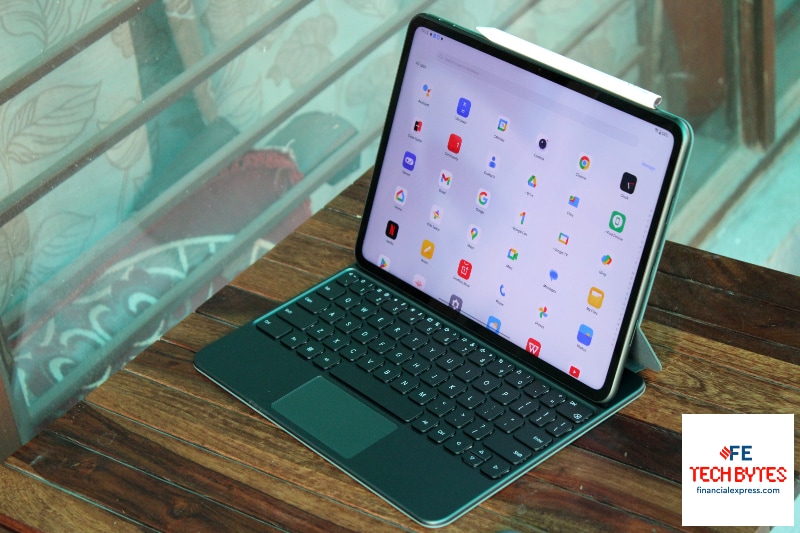
There are other hardware niceties, too. The quad speaker setup gets nice and loud with good channel separation. The 13MP rear camera is handy for scanning documents, the 8MP front-facing camera does well at video conferencing with subject auto-framing also available.
The software is where the OnePlus Pad starts to show its weaknesses. Unlike some of its big competitors –Xiaomi included— OnePlus chose to outfit its tablet with what can only be called smartphone software with few tablet features on the side. The OnePlus Pad runs OxygenOS 13.1 based on Android 13. What this means is that a lot of the things you’ll do on this tablet will simply be smartphone stuff on steroids (and not the good type either).
Also Read | OnePlus 11R review: The fan edition OnePlus phone you’d been waiting for?
Android has a reputation on large screens but brands have started to work around its limitations and offer relevant features to make all the extra real estate more useful, basically increasing on-the-go multitasking so they can become more than just Netflix binge machines. Some brands pitch their tablets as laptop replacements, too, afterall. And while OnePlus doesn’t make any such tall claims at the time of writing, those vying for more value out of a tablet purchase will surely want more (of their money’s worth). But because this is only OnePlus’s first attempt, it is understandable. Already, a lot of things like phone and data hotspot connect are in the pipeline and hopefully, more will be coming in due course of time.
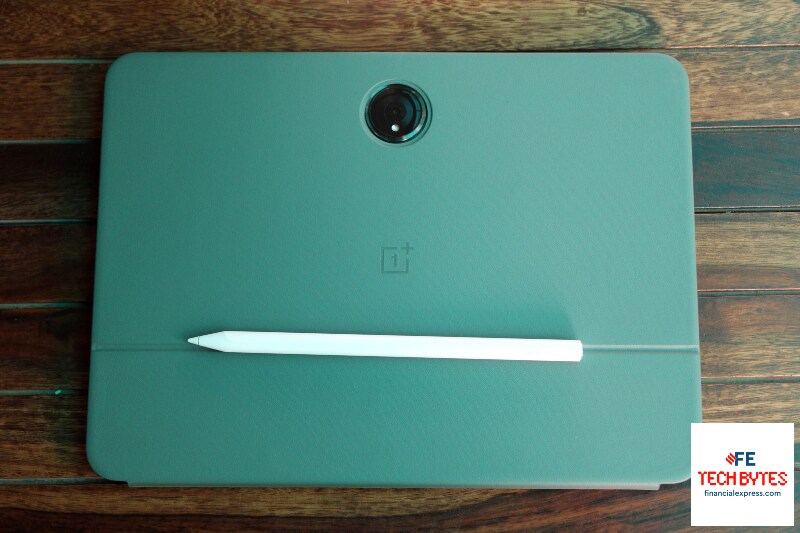
At launch though, the OnePlus Pad supports only a handful of productivity features like split-screen and floating windows. The irony is that not a lot of Android apps support even this basic level of functionality. As is usually the case, OnePlus is also selling optional accessories like keyboard and stylus. OnePlus magnetic keyboard is priced at Rs 7,999, OnePlus stylo at Rs 4,999, and folio case at Rs 1,499. The keyboard is full-size (for this form factor) and also has a neat trackpad. It doesn’t support a lot of shortcuts, but it’s nice to have if you’re looking to do some basic writing and browsing. The stylus attaches magnetically and supports tilt and pressure sensitivity. It can also switch between writing and erasing with a quick tap.
OnePlus Pad— should you buy it?
The OnePlus Pad hardware is pure gold. It’s a case study on what to put and what to remove, in order to get the price right. And the price of this tablet, is just right. OnePlus Pad is priced at Rs 37,999 for 8GB/128GB and Rs 39,999 for 12GB/256GB. But even with all its hardware goodness, and competitive pricing, it is only just another Android tablet that doesn’t really reinvent the wheel, which is what we expect from OnePlus every time it gets into a new category.
You can get the OnePlus Pad and chances are it will mostly impress you. I know I am. But it’s also a stark reminder of how much work and effort Samsung and Apple (and now even Xiaomi) have put into making these gadgets tick and worth your attention— and how much more work remains to be done, to make them a must-have. OnePlus is only getting started.
| PROS | CONS |
| Premium design | Display prone to accidental touches |
| 7:5 aspect ratio | Few tablet features at launch |
| Fast performance | No headphone jack |
| Great battery life, quick charging | |
| Loud speakers |

